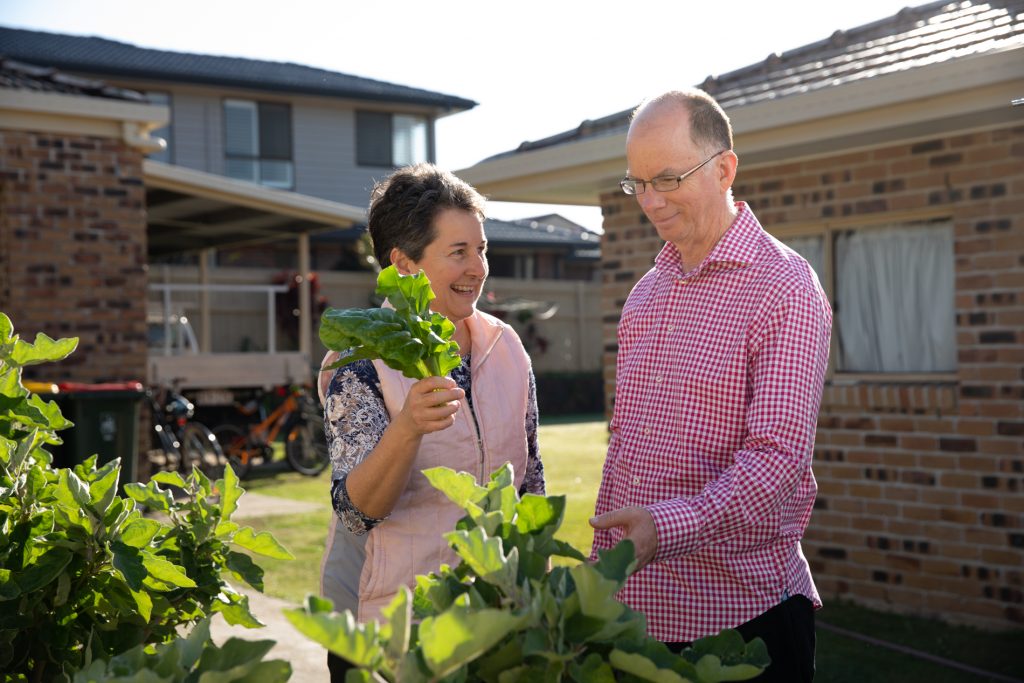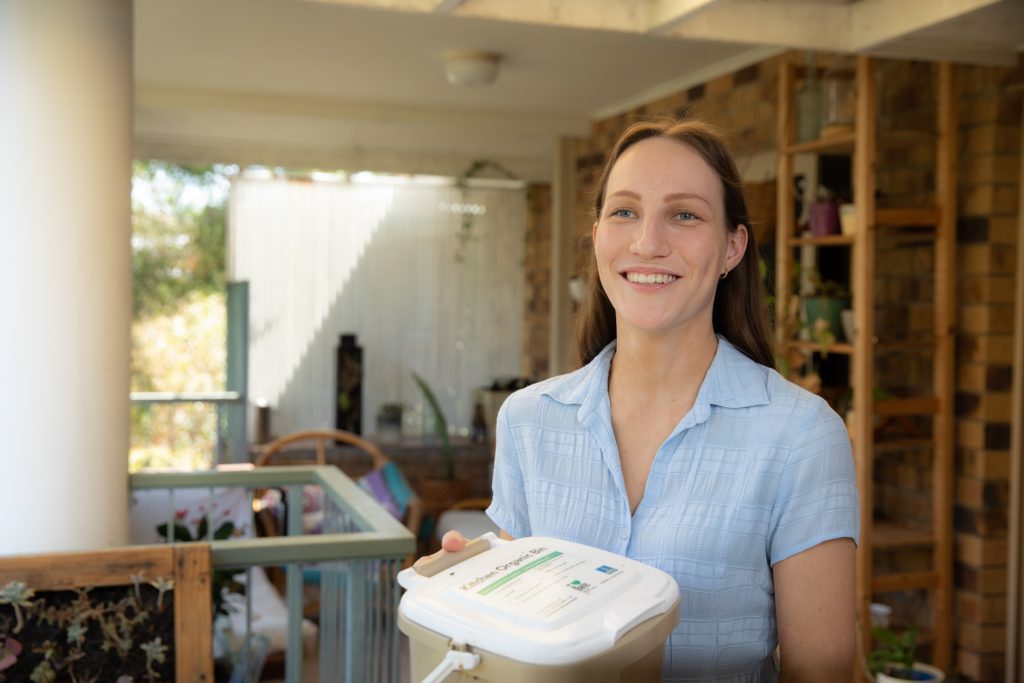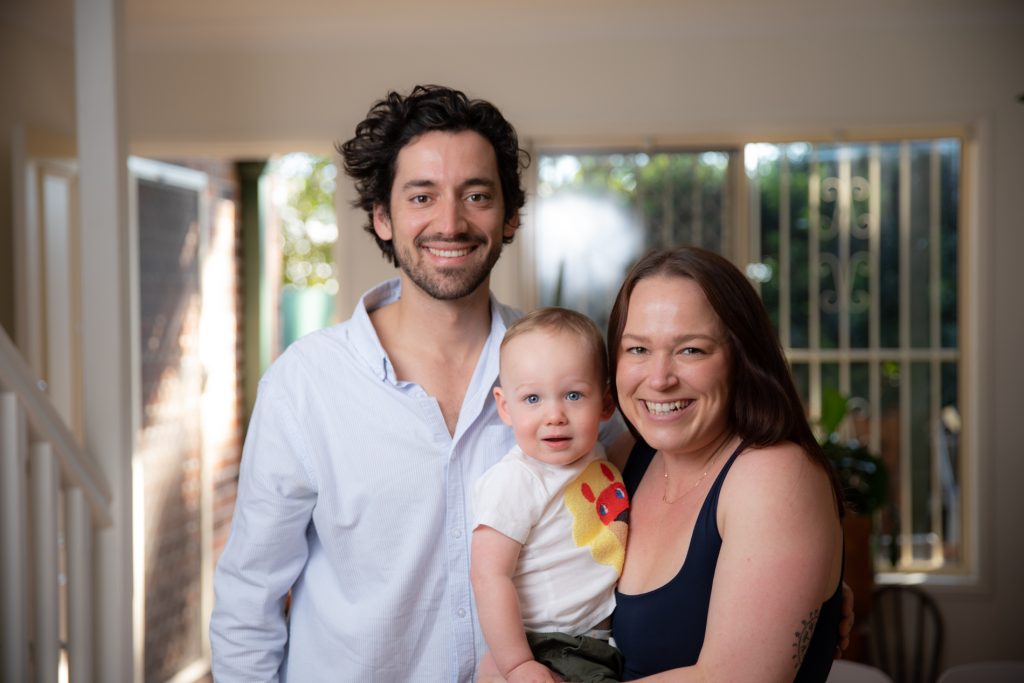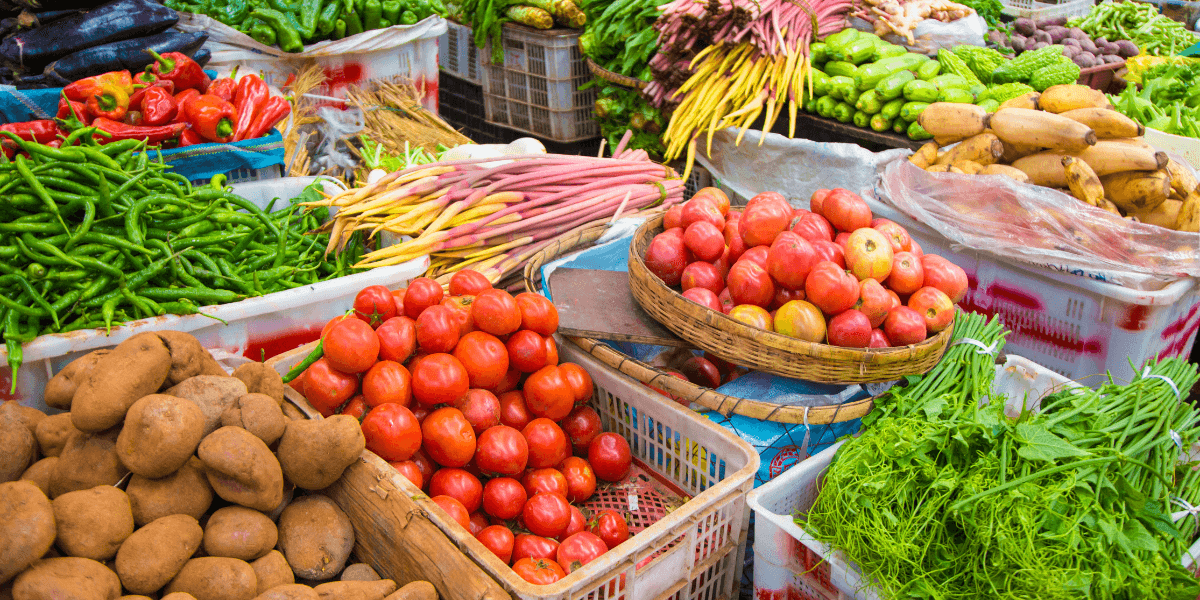REDUCE EMISSIONS, SUSTAINABLE TRAVEL
How to reduce waste and influence people
Brisbane households share advice on how to lower your carbon emissions from waste and encourage others to join in and live more sustainably, writes Sam Mullen.
Talking to others about sustainable living can be uncomfortable. I find that it’s a constant battle between wanting to help your friends and family with the knowledge they need, and the feeling of coming off as preaching and pressuring people to live a certain way. So how can you help influence your community to take the Brisbane Carbon Challenge and lower their environmental footprint?
Turns out, households all over Brisbane have had success lowering their carbon footprint through food waste while also helping their community to join in on the action. See below to learn how you can help others be more sustainable.
Put your compost on display
Before taking the Brisbane Carbon Challenge, Lisa Blumke and her family in South Brisbane were emitting roughly 11.6 tonnes of carbon every year; this is slightly above the Brisbane average of 11.5 tonnes. After using the online carbon calculator, the Blumke household took action to reduce their emissions from home energy, transport and waste and are now on track to halve their carbon footprint!

Lisa notes that during the Challenge, the Blumke’s became “more conscious of composting all garden waste and vegetable scraps.”
Composting food and garden waste reduced the Blumke’s waste emissions by 39%. Yet the family’s impact was wider-reaching. Neighbours soon started noticing the Blumke’s multiple compost bins, which led to conversations and information sharing. Soon after that, some of the neighbours also started to compost!
Many people don’t know that when organic matter sits in landfill, it emits methane, a greenhouse gas with a global warming potential 28 times more harmful than carbon dioxide over a period of 100 years.
If your compost bins are located in a visible place, they can be a great conversation starter with your neighbours about how to lower emissions while also creating nutrient-rich soil.
Lead by example to get your housemate/s onboard
A lot of people think that living in an apartment means you can’t compost. However, Laura Ferris proved that wasn’t the case after purchasing a Bokashi Bin – a compact odourless compost caddy which can be stored inside.

Laura lives in a two-bedroom rental apartment with her flatmate Finn. Laura was leading the charge for composting in the household, which meant collecting food scraps in the counter-top caddy and emptying them at her local community composting hub.
Finn wasn’t as interested in composting initially. But Laura knew he disliked the smell of food waste sitting in their general waste bin. She took this as an opportunity to discuss the environmental benefits of composting, and practically, how separating food scraps from the general waste minimised the smell.
Laura and Finn received coaching as part of the Brisbane Carbon Challenge and learnt that even cooked food waste could be composted in a Bokashi bin. It also helped to keep their compost caddy on the kitchen bench, which acted as an effective prompt for Finn while cutting up vegetables and disposing of other food scraps. Having Laura lead by example helped Finn see how easy it was to compost in a shared apartment, and now he has developed a composting habit.

Laura and Finn’s carbon emissions from waste are down to 0.19 tonnes a year; that’s 70% lower than the average Brisbane household’s waste emissions of 0.61 tonnes!
Do you know about Brisbane City Council’s compost rebate program?
Brisbane residents are eligible for a rebate of up to $70 for the purchase of composting equipment. Click here to learn more.
Start a building community compost hub
Sheridan Braatvedt, her husband Phil and their son live in a rented townhouse complex in North Brisbane. Since taking the Brisbane Carbon Challenge, they’ve reduced their emissions from waste by an impressive 78%!
They’ve also come up with a system to let their neighbours who don’t have a compost bin use theirs. Sheridan recalls, “we sent a notice [to our neighbours] through the body corporate… and encouraged them to collect their scraps instead of them going into their waste bin.”
“We put our compost tumbler just inside our gate and put a sign up with step-by-step instructions in case they were unsure. We used a sticker to identify which side they needed to add to.”

Sheridan notes that her neighbours are not only disposing of their food waste more sustainably, but they are reaping the benefits too, “we have also offered the mature compost and soil back to the [other] houses if they want to plant or put it into their courtyards.”
Focussing on discussing just one thing at a time (like composting) can help you influence others to live more sustainably. Also, Sheridan recommends thinking about the bigger picture.
“The more people that reduce their impact, the better off we all are. Even if it’s just one step at a time.”
– Sheridan Braatvedt
Want to lower your emissions? Lower your waste
While it’s great to compost food scraps, the most sustainable way to manage your food waste is to reduce the amount of food you throw out. This can add up to big savings on grocery bills. It’s definitely helped Sheridan:
“We thought more creatively about if we really needed to dispose of our waste or if we could find another use for the waste. The biggest concept we put into practice to reduce our waste was planning out our meals so we weren’t getting to the end of the week and having to compost vegetables that we purchased fresh because we hadn’t used them!! It’s saved us waste and money.”
Laura also learned some practical food waste tips from taking the Brisbane Carbon Challenge:
“Pre-chopping the onions and freezing them because they were about to go off was very handy and I will continue to prepare and freeze vegetables in the future.”
Challenge your friends, family and yourself to lower your carbon footprint
Composting is a great way to lower your greenhouse gas emissions from waste. But waste is only a small part of the story. Transport and home energy are responsible for approximately 95% of the average Brisbane household’s carbon emissions from these three emissions sources. Learn tips to lower your transport emissions, or if you’re thinking about your home energy emissions, GreenPower has helped Brisbane households nearly halve their carbon footprint. There are many ways you can lower your carbon emissions without breaking the bank.
Take the Brisbane Carbon Challenge online calculator and see how you stack up against the Brisbane household average. This can also help you know where to start reducing your emissions. Use the online actions and resources and retake the calculator to check your results.
The author

Sam Mullen
Sam is a sustainability specialist at Brisbane Sustainability Agency and enjoys helping residents and community groups understand and reduce their climate impact while also promoting a circular economy.








